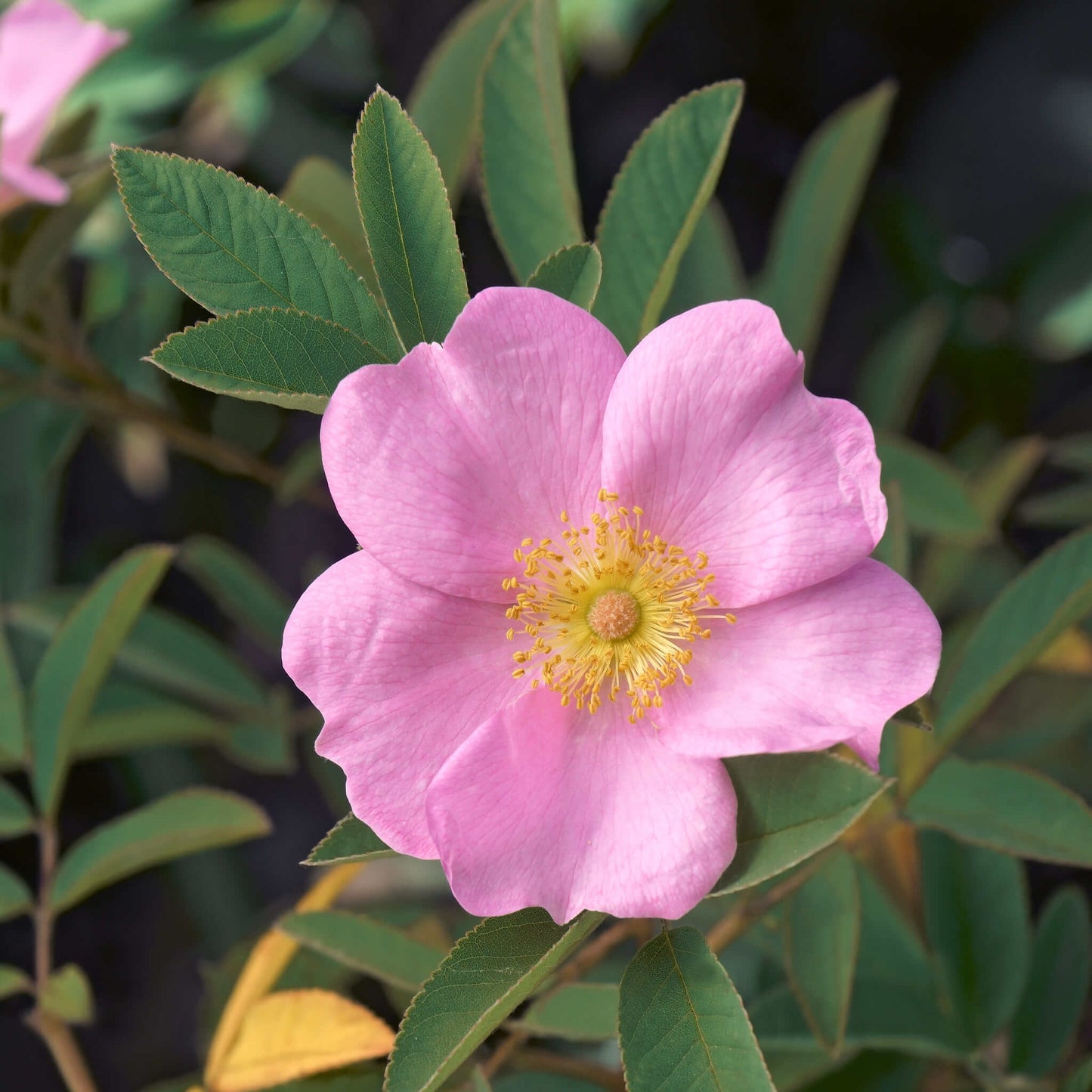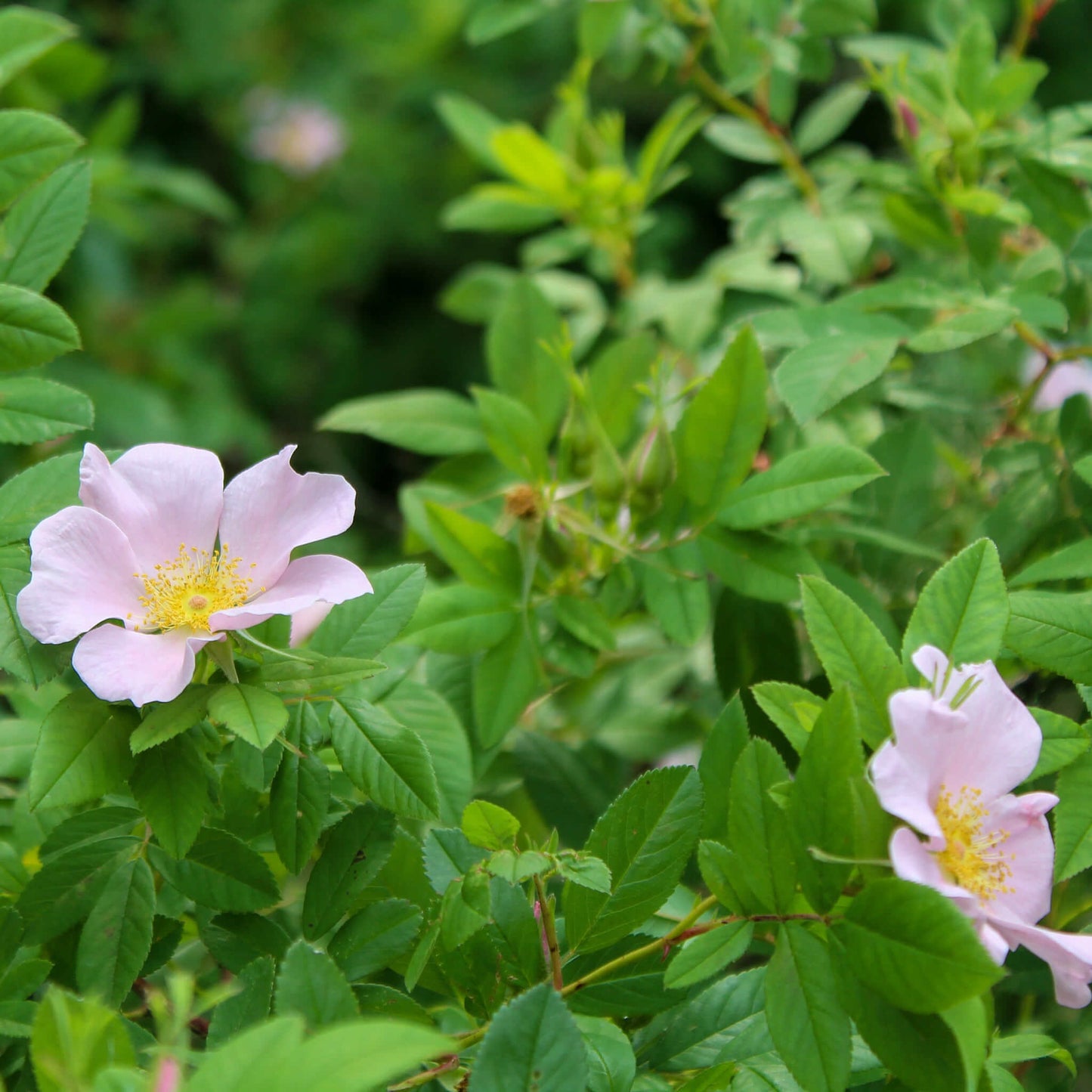This site is protected by hCaptcha and the hCaptcha Privacy Policy and Terms of Service apply.
For successful seedlings,
see the growing notes at the bottom of the page!
Swamp rose (Rosa palustris) is a native shrub from wetland areas, commonly found along rivers, in swamps, and in wet meadows. It typically reaches 1.5 to 2.5 meters in height, with thorny stems and leaves made up of serrated leaflets. In summer, swamp rose produces large, bright pink, simple, and fragrant flowers that attract many pollinators. In the fall, the flowers turn into small red fruits (hips), adding a splash of colour and providing a valuable food source for wildlife.
Medicinal and Culinary Uses
Swamp rose has astringent, tonic, and diuretic properties. The hips are rich in vitamin C and can be used to make herbal teas, jams, and syrups. In traditional medicine, the petals and leaves were also used in infusions to soothe minor respiratory ailments and mild skin irritations.
Ecological Roles
Swamp rose plays an important ecological role, providing both food and shelter for many animals. Its nectar-rich flowers attract bees, butterflies, and other pollinators, while the hips in the fall offer a food source for birds and small mammals. As a plant suited to wetland environments, it helps stabilize soil and prevent erosion along riverbanks.
Swamp rose seeds require cold stratification to ensure germination. See the cultivation notes below for more details.
Akène cannot assume any responsibility for the use of plants for therapeutic purposes. Always seek advice from a professional before using a medicinal or edible plant.
Sowing and Growing
Technical Details
Seeds per packet: 50
Family: Rosaceae
Scientific name: Rosa palustris
Life cycle: Perennial
Hardiness zone: 4
Soil type: Sandy to clayey
Soil moisture level: Humid to wet
Soil - additional attributes: Tolerates acidity
Light: Sun, part shade, shade
Blooming: May to June
Spacing: 100 cm
Height: 150 to 250 cm
Deer resistance: Low to moderate
Stratification: 90 days
Scarification: Soak in hot water for 24 hours
Germination time:
Sowing depth: 6-12 mm


